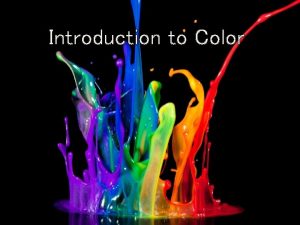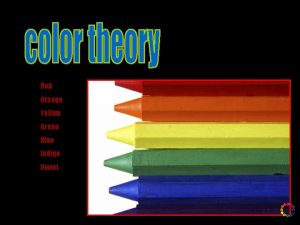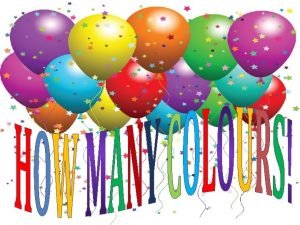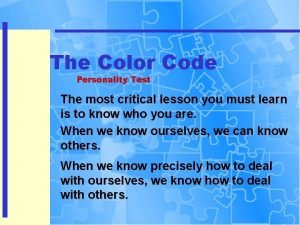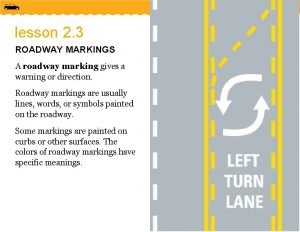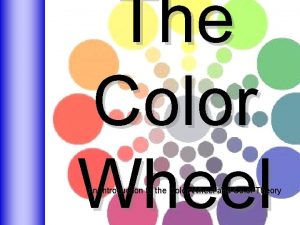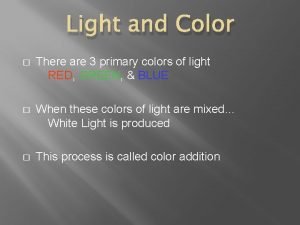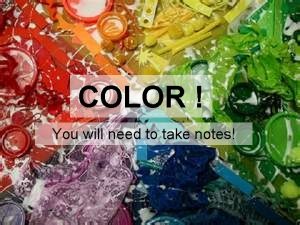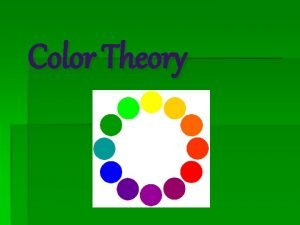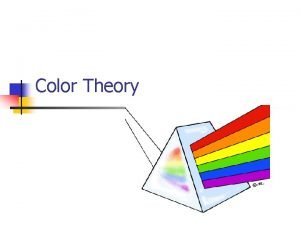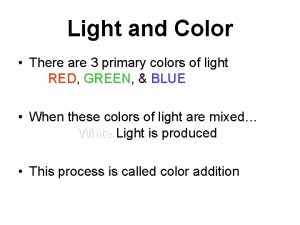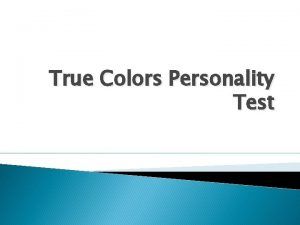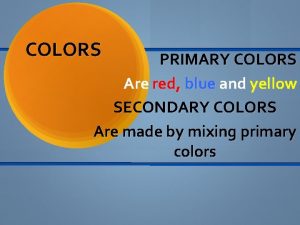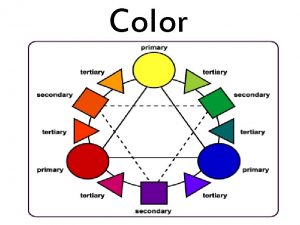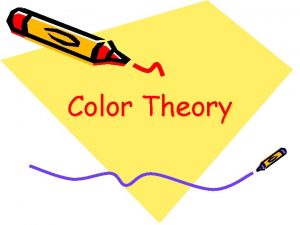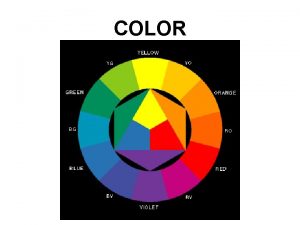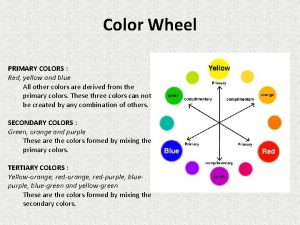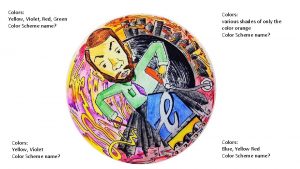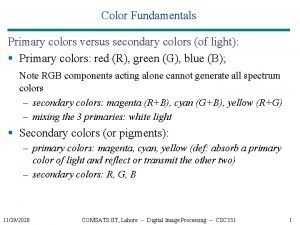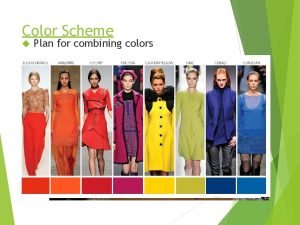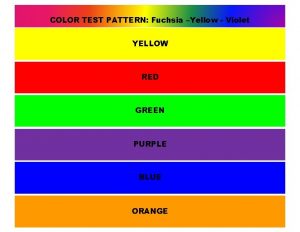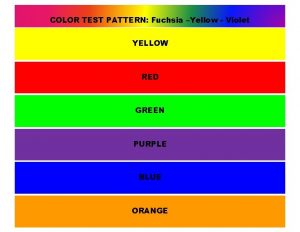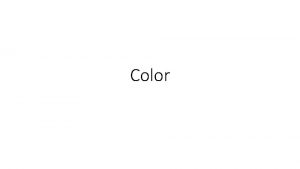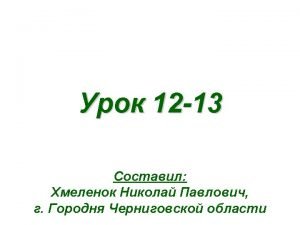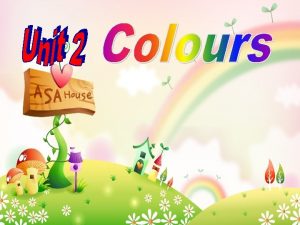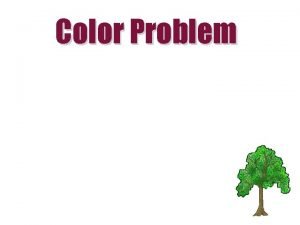Understanding Color Chapter 9 Primary Colors Red Yellow
















- Slides: 16

Understanding Color Chapter 9

Primary Colors • Red, Yellow, Blue – Basic colors from which all other colors are made – Can NOT be made from combining any colors – Equally spaced on the color wheel

Secondary Colors • Green, Orange, Violet (Purple) – Equally spaced on the color wheel – Made by combining 2 primary colors • Blue + Yellow = Green • Red + Yellow = Orange • Red + Blue = Violet

Tertiary Colors • Made by combining a primary color and a secondary color – Ex. —Red + Orange = Red-Orange – Ex. —Blue + Violet = Blue-Violet

Value • Lightness or darkness of a color – Add white to lighten a color = tint • Pastels—light pink, mint green, baby blue – Add black to darken a color = shade • Navy blue, brown (shade of orange)

Intensity • Brightness or dullness of a color – Bright = jewel tones • Emerald green, ruby red – Dull colors (not necessarily boring or drab) = Softer, muted, subdued • Dusty rose, khaki green – Reduce intensity dull =add gray

Neutrals • Black & White – NOT colors – Not on the color wheel • Gray – Combination of black and white – Beige and brown are sometimes considered neutrals, but are not true neutrals

Color Schemes

Monochromatic • One color • Different tints and shades • Example: Light blue, dark blue

Analagous • 3 -4 colors next to each other on the color wheel • Examples: • Red, red-violet, violet • Blue, green, yellow

Triad • 3 colors EVENLY spaced on the color wheel • Common examples/uses: Primary colors (red, blue, yellow) or secondary colors (green, orange, purple)

Complementary • 2 colors opposite one another on the color wheel • Examples: • Red/green • Yellow/purple • Blue/orange

Split Complementary • One color + the two colors on either side of its complement • Example: • Red, Yellow-green, Blue-green • Blue-violet, Orange, Yellow

Neutral • Black, White, Gray—mix of black and white • In fashion, may also include brown and beige

Neutral with an Accent • Any neutral + color (usually one, but may be more)

REVIEW! Color Photo Hunt with a Partner
 120706color
120706color Brown blue yellow/green
Brown blue yellow/green Pink
Pink Red orange yellow green blue purple pink brown
Red orange yellow green blue purple pink brown Yellow magenta and cyan are the ___
Yellow magenta and cyan are the ___ Yellow je
Yellow je Famous blue personalities
Famous blue personalities Broken yellow center line
Broken yellow center line What do red raised roadway markers mean
What do red raised roadway markers mean Primary secondary tertiary colors
Primary secondary tertiary colors What color does magenta absorb
What color does magenta absorb What are the 5 primary colors
What are the 5 primary colors All the primary colors
All the primary colors Nnn color scheme
Nnn color scheme All primary colors
All primary colors The primary pigment colors are
The primary pigment colors are Color leadership test
Color leadership test
